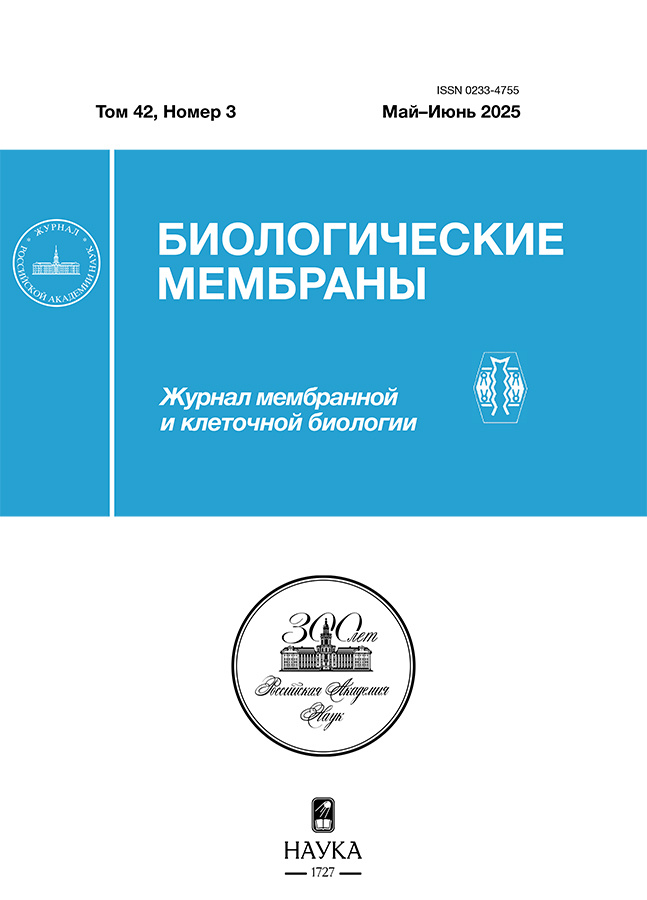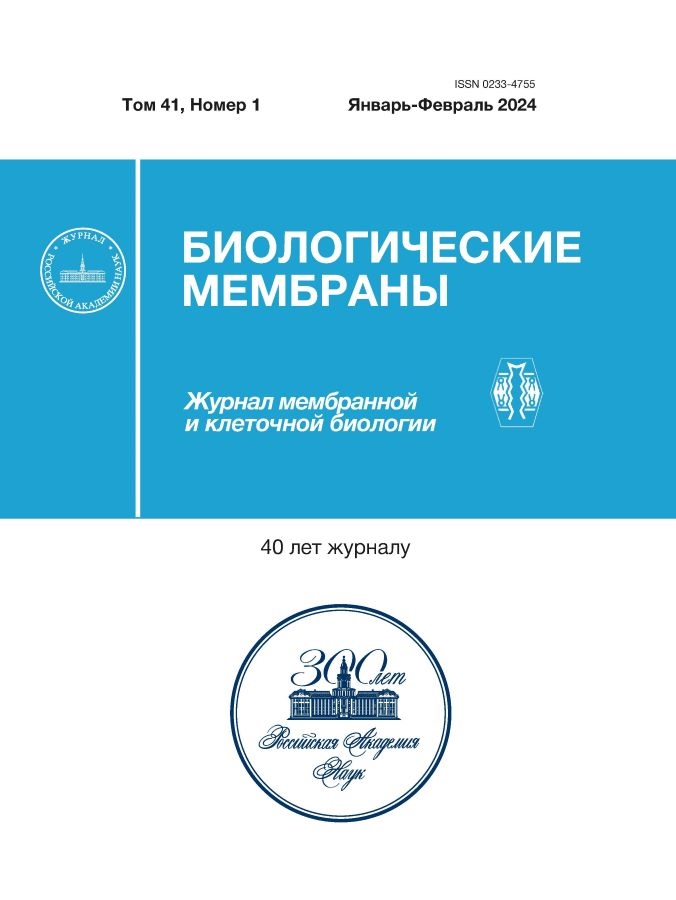Активация гистамином сорбции фактора комплемента С3/C3b на поверхности эндотелиальных клеток как одна из причин повреждения эндотелия при COVID-19
- Авторы: Авдонин П.П.1, Маркитантова Ю.В.1, Рыбакова Е.Ю.1, Гончаров Н.В.2, Авдонин П.В.1
-
Учреждения:
- Институт биологии развития им. Н. К. Кольцова РАН
- Институт эволюционной физиологии и биохимии им. И.М. Сеченова РАН
- Выпуск: Том 41, № 1 (2024)
- Страницы: 73-81
- Раздел: СТАТЬИ
- URL: https://www.journal-ta.ru/0233-4755/article/view/667470
- DOI: https://doi.org/10.31857/S0233475524010051
- EDN: https://elibrary.ru/zmbcfc
- ID: 667470
Цитировать
Полный текст
Аннотация
Повреждение эндотелия в результате активации системы комплемента является одной из причин тромботических осложнений при COVID-19. Ключевую роль в этом процессе играет фактор С3. Присоединение к мембране продукта его протеолиза С3b инициирует начало формирования мембраноатакующего комплекса С5b-9, образующего пору в плазматической мембране и гибель клетки. В настоящей работе мы исследовали, каким образом гистамин, секретируемый в организме в местах локального воспаления лейкоцитами и тучными клетками, может повлиять на связывание C3b с эндотелиальными клетками (ЭК). Для его визуализации были использованы конъюгированные с FITS антитела против С3с фрагмента. Данные антитела связываются с интактным C3 и с C3b, но не с С3а. Мы показали, что при инкубации плазмы крови человека с культивируемыми ЭК из пупочной вены человека происходит накопление фактора С3/С3b в виде округлых локальных и диффузных очагов на поверхности клеточного монослоя. Предварительная активация ЭК гистамином увеличивает количество мест прикрепления C3/С3b. Эти данные позволяют предполагать, что гистамин способен усиливать повреждение эндотелиального слоя при гиперактивации системы комплемента при COVID-19 и эндотелиопатиях, вызванных другими заболеваниями.
Ключевые слова
Полный текст
Об авторах
П. П. Авдонин
Институт биологии развития им. Н. К. Кольцова РАН
Email: pvavdonin@yandex.ru
Россия, 119334, Москва
Ю. В. Маркитантова
Институт биологии развития им. Н. К. Кольцова РАН
Email: pvavdonin@yandex.ru
Россия, 119334, Москва
Е. Ю. Рыбакова
Институт биологии развития им. Н. К. Кольцова РАН
Email: pvavdonin@yandex.ru
Россия, 119334, Москва
Н. В. Гончаров
Институт эволюционной физиологии и биохимии им. И.М. Сеченова РАН
Email: pvavdonin@yandex.ru
Россия, 194223, Санкт-Петербург
П. В. Авдонин
Институт биологии развития им. Н. К. Кольцова РАН
Автор, ответственный за переписку.
Email: pvavdonin@yandex.ru
Россия, 119334, Москва
Список литературы
- Bettoni S., Galbusera M., Gastoldi S., Donadelli R., Tentori C., Sparta G., Bresin E., Mele C., Alberti M., Tortajada A., Yebenes H., Remuzzi G., Noris M. 2017. Interaction between multimeric von Willebrand factor and complement: A fresh look to the pathophysiology of microvascular thrombosis. J. Immunol. 199, 1021–1040. https://doi.org/10.4049/jimmunol.1601121
- Blasco M., Guillen-Olmos E., Diaz-Ricart M., Palomo M. 2022. complement mediated endothelial damage in thrombotic microangiopathies. Front Med (Lausanne). 9, 811504. https://doi.org/10.3389/fmed.2022.811504
- Noris M., Benigni A., Remuzzi G. 2020. The case of complement activation in COVID-19 multiorgan impact. Kidney Int. 98, 314–322. https://doi.org/10.1016/j.kint.2020.05.013
- Cugno M., Meroni P.L., Gualtierotti R., Griffini S., Grovetti E., Torri A., Lonati P., Grossi C., Borghi M.O., Novembrino C., Boscolo M., Uceda Renteria S.C., Valenti L., Lamorte G., Manunta M., Prati D., Pesenti A., Blasi F., Costantino G., Gori A., Bandera A., Tedesco F., Peyvandi F. 2021. Complement activation and endothelial perturbation parallel COVID-19 severity and activity. J. Autoimmun. 116, 102560. https://doi.org/10.1016/j.jaut.2020.102560
- Ge X., Yu Z., Guo X., Li L., Ye L., Ye M., Yuan J., Zhu C., Hu W., Hou Y. 2023. Complement and complement regulatory proteins are upregulated in lungs of COVID-19 patients. Pathol. Res. Pract. 247, 154519. https://doi.org/10.1016/j.prp.2023.154519
- Marchetti M. 2020. COVID-19-driven endothelial damage: complement, HIF-1, and ABL2 are potential pathways of damage and targets for cure. Ann. Hematol. 99, 1701–1707. https://doi.org/10.1007/s00277–020–04138–8
- Perico L., Benigni A., Casiraghi F., Ng L.F.P., Renia L., Remuzzi G. 2021. Immunity, endothelial injury and complement-induced coagulopathy in COVID-19. Nat. Rev. Nephrol. 17, 46–64. https://doi.org/10.1038/s41581–020–00357–4
- Arbore G., Kemper C., Kolev M. 2017. Intracellular complement — the complosome — in immune cell regulation. Mol. Immunol. 89, 2–9. https://doi.org/10.1016/j.molimm.2017.05.012
- Boudhabhay I., Grunenwald A., Roumenina L.T. 2021. Complement C3 deposition on endothelial cells revealed by flow cytometry. Methods Mol. Biol. 2227, 97–105. https://doi.org/10.1007/978–1–0716–1016–9_9
- Noris M., Galbusera M., Gastoldi S., Macor P., Banterla F., Bresin E., Tripodo C., Bettoni S., Donadelli R., Valoti E., Tedesco F., Amore A., Coppo R., Ruggenenti P., Gotti E., Remuzzi G. 2014. Dynamics of complement activation in aHUS and how to monitor eculizumab therapy. Blood. 124, 1715–1726. https://doi.org/10.1182/blood-2014–02–558296
- Noris M., Mescia F., Remuzzi G. 2012. STEC-HUS, atypical HUS and TTP are all diseases of complement activation. Nat. Rev. Nephrol. 8, 622–633. https://doi.org/10.1038/nrneph.2012.195
- Ponomaryov T., Payne H., Fabritz L., Wagner D.D., Brill A. 2017. Mast cells granular contents are crucial for deep vein thrombosis in mice. Circ. Res. 121, 941–950. https://doi.org/10.1161/CIRCRESAHA.117.311185
- Borriello F., Iannone R., Marone G. 2017. histamine release from mast cells and basophils. Handb. Exp. Pharmacol. 241, 121–139. https://doi.org/10.1007/164_2017_18
- Schmutzler W., Bolsmann K., Zwadlo-Klarwasser G. 1995. Comparison of histamine release from human blood monocytes, lymphocytes, adenoidal and skin mast cells. Int. Arch. Allergy Immunol. 107, 194–196. https://doi.org/10.1159/000236974
- Hamilton K.K., Sims P.J. 1987. Changes in cytosolic Ca2+ associated with von Willebrand factor release in human endothelial cells exposed to histamine. Study of microcarrier cell monolayers using the fluorescent probe indo-1. J. Clin. Invest. 79, 600–608. https://doi.org/10.1172/JCI112853
- Ryan U.S., Avdonin P.V., Posin E.Y., Popov E.G., Danilov S.M., Tkachuk V.A. 1988. Influence of vasoactive agents on cytoplasmic free calcium in vascular endothelial cells. J. Appl. Physiol. 65, 2221–2227. https://doi.org/10.1152/jappl.1988.65.5.2221
- Hekimian G., Cote S., Van Sande J., Boeynaems J.M. 1992. H2 receptor-mediated responses of aortic endothelial cells to histamine. Am.J. Physiol. 262, H220–H224. https://doi.org/10.1152/ajpheart.1992.262.1.H220
- Goncharov N.V., Sakharov I., Danilov S.M., Sakandelidze O.G. 1987. Use of collagenase from the hepatopancreas of the Kamchatka crab for isolating and culturing endothelial cells of the large vessels in man. Biull. Eksp. Biol. Med. 104, 376–378.
- Galbusera M., Noris M., Gastoldi S., Bresin E., Mele C., Breno M., Cuccarolo P., Alberti M., Valoti E., Piras R., Donadelli R., Vivarelli M., Murer L., Pecoraro C., Ferrari E., Perna A., Benigni A., Portalupi V., Remuzzi G. 2019. An ex vivo test of complement activation on endothelium for individualized eculizumab therapy in hemolytic uremic syndrome. Am.J. Kidney Dis. 74, 56–72. https://doi.org/10.1053/j.ajkd.2018.11.012
- Meuleman M.S., Duval A., Fremeaux-Bacchi V., Roumenina L.T., Chauvet S. 2022. Ex vivo test for measuring complement attack on endothelial cells: From research to bedside. Front. Immunol. 13, 860689. https://doi.org/10.3389/fimmu.2022.860689
- West E.E., Kemper C. 2023. Complosome — the intracellular complement system. Nat. Rev. Nephrol. 19, 426–439. https://doi.org/10.1038/s41581–023–00704–1
- Law S.K.A., Levine R.P. 2019. The covalent binding story of the complement proteins C3 and C4 (I) 1972–1981. Immunobiology. 224, 827–833. https://doi.org/10.1016/j.imbio.2019.08.003
- Del Conde I., Cruz M.A., Zhang H., Lopez J.A., Afshar-Kharghan V. 2005. Platelet activation leads to activation and propagation of the complement system. J. Exp. Med. 201, 871–879. https://doi.org/10.1084/jem.20041497
- Esposito B., Gambara G., Lewis A.M., Palombi F., D’Alessio A., Taylor L.X., Genazzani A.A., Ziparo E., Galione A., Churchill G.C., Filippini A. 2011. NAADP links histamine H1 receptors to secretion of von Willebrand factor in human endothelial cells. Blood. 117, 4968–4977. https://doi.org/10.1182/blood-2010–02–266338
- Avdonin P.V., Rybakova E.Y., Avdonin P.P., Trufanov S.K., Mironova G.Y., Tsitrina A.A., Goncharov N.V. 2019. VAS2870 inhibits histamine-induced calcium signaling and vWF secretion in human umbilical vein endothelial cells. Cells. 8 (2), 196. https://doi.org/10.3390/cells8020196
- Avdonin P.P., Trufanov S.K., Rybakova E.Y., Tsitrina A.A., Goncharov N.V., Avdonin P.V. 2021. The use of fluorescently labeled ARC1779 aptamer for assessing the effect of H2O2 on von Willebrand factor exocytosis. Biochemistry (Mosc). 86, 123–131. https://doi.org/10.1134/S0006297921020012
- Jones D.A., Abbassi O., McIntire L.V., McEver R.P., Smith C.W. 1993. P-selectin mediates neutrophil rolling on histamine-stimulated endothelial cells. Biophys. J. 65, 1560–1569. https://doi.org/10.1016/S0006–3495(93)81195–0
- Schramm E.C., Roumenina L.T., Rybkine T., Chauvet S., Vieira-Martins P., Hue C., Maga T., Valoti E., Wilson V., Jokiranta S., Smith R.J., Noris M., Goodship T., Atkinson J.P., Fremeaux-Bacchi V. 2015. Mapping interactions between complement C3 and regulators using mutations in atypical hemolytic uremic syndrome. Blood. 125, 2359–2369. https://doi.org/10.1182/blood-2014–10–609073
- McNearney T., Ballard L., Seya T., Atkinson J.P. 1989. Membrane cofactor protein of complement is present on human fibroblast, epithelial, and endothelial cells. J. Clin. Invest. 84, 538–545. https://doi.org/10.1172/JCI114196
- Alexander J.J., He C., Adler S., Holers V.M., Quigg R.J. 1997. Characterization of C3 receptors on cultured rat glomerular endothelial cells. Kidney Int. 51, 1124–1132. https://doi.org/10.1038/ki.1997.155
- Tsuji S., Kaji K., Nagasawa S. 1994. Activation of the alternative pathway of human complement by apoptotic human umbilical vein endothelial cells. J. Biochem. 116, 794–800. https://doi.org/10.1093/oxfordjournals.jbchem.a124598
- Collard C.D., Vakeva A., Bukusoglu C., Zund G., Sperati C.J., Colgan S.P., Stahl G.L. 1997. Reoxygenation of hypoxic human umbilical vein endothelial cells activates the classic complement pathway. Circulation. 96, 326–333. https://doi.org/10.1161/01.cir.96.1.326
- Mold C., Morris C.A. 2001. Complement activation by apoptotic endothelial cells following hypoxia/reoxygenation. Immunology. 102, 359–364. https://doi.org/10.1046/j.1365–2567.2001.01192.x
- Yin W., Ghebrehiwet B., Weksler B., Peerschke E.I. 2007. Classical pathway complement activation on human endothelial cells. Mol. Immunol. 44, 2228–2234. https://doi.org/10.1016/j.molimm.2006.11.012
- Macor P., Durigutto P., Mangogna A., Bussani R., De Maso L., D’Errico S., Zanon M., Pozzi N., Meroni P.L., Tedesco F. 2021. Multiple-organ complement deposition on vascular endothelium in COVID-19 patients. Biomedicines. 9, 1003. https://doi.org/10.3390/biomedicines9081003
- Vlaicu S.I., Tatomir A., Cuevas J., Rus V., Rus H. 2023. COVID, complement, and the brain. Front Immunol. 14, 1216457. https://doi.org/10.3389/fimmu.2023.1216457
- Gao T., Zhu L., Liu H., Zhang X., Wang T., Fu Y., Li H., Dong Q., Hu Y., Zhang Z., Jin J., Liu Z., Yang W., Liu Y., Jin Y., Li K., Xiao Y., Liu J., Zhao H., Liu Y., Li P., Song J., Zhang L., Gao Y., Kang S., Chen S., Ma Q., Bian X., Chen W., Liu X., Mao Q., Cao C. 2022. Highly pathogenic coronavirus N protein aggravates inflammation by MASP-2-mediated lectin complement pathway overactivation. Signal Transduct. Target Ther. 7, 318. https://doi.org/10.1038/s41392–022–01133–5
- Conti P., Caraffa A., Tete G., Gallenga C.E., Ross R., Kritas S.K., Frydas I., Younes A., Di Emidio P., Ronconi G. 2020. Mast cells activated by SARS-CoV-2 release histamine which increases IL-1 levels causing cytokine storm and inflammatory reaction in COVID-19. J. Biol. Regul. Homeost. Agents. 34, 1629–1632. https://doi.org/10.23812/20–2EDIT
- Hogan Ii R.B., Hogan Iii R.B., Cannon T., Rappai M., Studdard J., Paul D., Dooley T.P. 2020. Dual-histamine receptor blockade with cetirizine — famotidine reduces pulmonary symptoms in COVID-19 patients. Pulm Pharmacol Ther. 63, 101942. https://doi.org/10.1016/j.pupt.2020.101942
Дополнительные файлы















